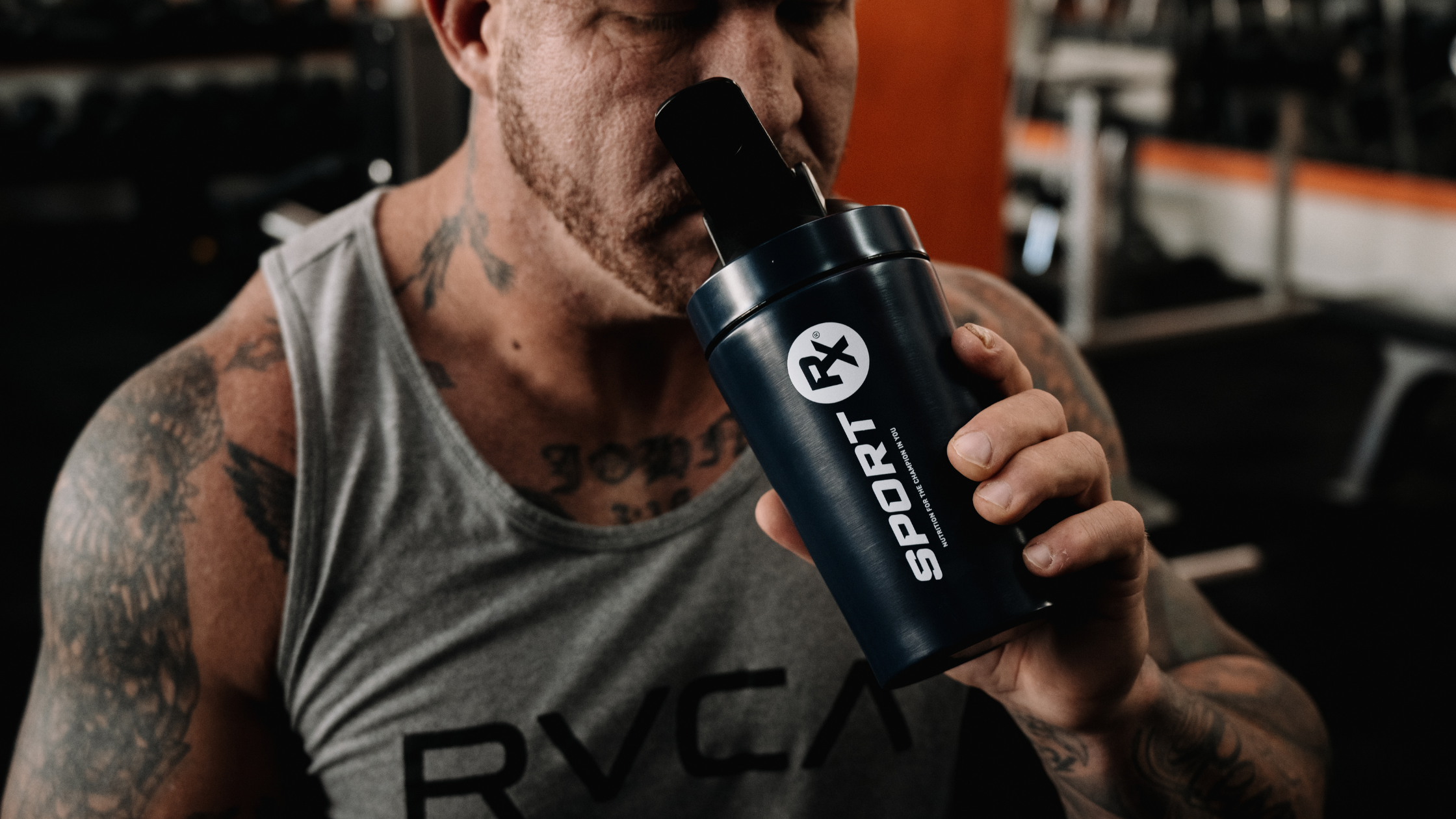In the realm of sports, achieving peak performance goes hand in hand with effective recovery strategies. Central to this process are two key elements: ensuring your body receives the right nutrients and maintaining proper hydration.
Regardless of your preferred exercise, whether you're a seasoned athlete or just starting, Performance and Rehab Specialist and Team Biokineticist for the Sharks Rugby Team, Jimmy Wright emphasises the significance of refuelling with a balanced diet to rejuvenate energy levels post-workout. Exploring the intricacies of muscle engagement, energy sources, and recovery tactics, in this comprehensive guide, Jimmy discusses optimal post-exercise recovery for athletes of all levels.
Post-exercise nutrition and hydration
Whether you're into endurance or explosive sports like power lifting or sprinting, the type of muscle fibres you engage determines your body's primary fuel preference. For instance:
- Type 1 muscle fibres are highly oxidative (high-fat metabolism) and excel in endurance activities, relying on fat for sustained energy and demonstrating high fatigue resistance. In other words, they take longer to wear down.
- Type 2 muscle fibres are better suited for powerful and explosive activities but fatigue more quickly.
Exercise intensity determines which muscle fibres your body will rely on as well as what energy source– like fatty acids and glycogen or lactic acid, and which get converted into Adenosine Triphosphate (ATP, also often called the currency of energy production).
ATP is super important for lots of things your cells do, like moving energy around and storing it. For instance, fat is a primary energy source during endurance activities, while glycogen takes precedence in intense and explosive exercises.
“Not all endurance athletes are the same when it comes to how their bodies use fuel (or food),” explains Jimmy. “Some athletes follow low-carb, high-fat diets, making them more efficient in using fatty acids for energy. On the other hand, those on high-carb diets rely on glycogen sooner during activities.”
Therefore, recovering effectively depends on the type of fuel your body uses the most throughout your workout. If you’re expending a lot of energy during an intense session, especially the kind that relies on glycogen, it's important to replace your glycogen stores as efficiently as possible.
Here are three fast ways to replenish your glycogen stores after exercising:
- Eat carbohydrates: Consume foods rich in carbohydrates, such as fruits, grains, and starchy vegetables, to quickly restore glycogen levels.
- Include protein: Combine carbohydrates with protein in your post-exercise meal or snack to enhance glycogen replenishment and support muscle recovery.
- Timing matters: Consume your carbohydrate-rich meal or snack within the first few hours after exercising, as this is when your body is most effective at replenishing glycogen stores.
Refuel straight after exercise
Refuelling after exercise is vital for energy availability and future physical demands, regardless of dietary preferences. Jimmy recommends a balanced mix of carbohydrates, fats, and protein post-training. Hydration is crucial for recovery too, especially in endurance activities that induce sweating.

While it’s often overlooked, replenishing lost water and electrolytes is essential for optimal recovery and performance, adds Jimmy. Because eating and digesting solid food immediately after an intense workout can be a challenge, he recommends supplementing with a well-rounded recovery and performance shake such as SPORT Rx Protein Rx, as a quick and effective solution to meet the body's carbohydrate, protein, and amino-acid needs.

For a balanced recovery drink that includes all the essential electrolytes your body needs to thrive plus collagen for muscle repair and L-glutamine, consider a drink like SPORT RX Recover Rx.
Practice dynamic stretching
Dynamic stretching, which involves controlled, active movements that take joints and muscles through their full range of motion to enhance flexibility, specifically after exercise is crucial to prevent joints from stiffening due to repetitive motions, thereby reducing the risk of injuries. Studies show that dynamic stretching can help to reduce stiffness and improve range of motion in key areas such as the hamstrings, hips and knees.
While long-hold/static stretching before exercise is no longer recommended by exercise professionals, it can be beneficial post-training for relaxation purposes.
“As a runner, I combine active and passive stretching, focusing on the joints used in my activity,” says Jimmy,” who breaks down his stretching as follows:
- 70% on hip/knee
- 20% on ankle/knee
- 10% on compound movements
“I keep all movements dynamic, but not ballistic (meaning that I move my joints through the largest range I can achieve, without strain, but ensuring that the movements are slow and controlled,” he adds.
Jimmy also enjoys stretching in water as it allows for an increased range of motion and a reduced impact on joints. Soft tissue release tools like a massage gun and foam roller are also great at releasing tension in areas like the glutes, quads, hamstrings, calves, feet, and upper/lower back.
Get enough good quality sleep
“Quality sleep is a highly underrated recovery strategy. But achieving seven to eight hours of uninterrupted sleep is crucial for optimal recovery,” says Jimmy. Key strategies to enhance sleep quality include:
- Establish a consistent bedtime routine, ensuring a similar morning wake-up routine for a balanced sleep schedule.
- Minimise exposure to blue light, emitted by devices like TVs, phones, iPads, and laptops, within an hour before bedtime to support your body’s natural melatonin release. Blue light tricks the brain by making it think that the sun hasn’t gone down, suppressing the body’s natural release of the hormone melatonin.
- Create a dark bedroom environment that’s light-proof.
- Maintain regular clean linen for a healthy and comfortable sleep space.
- Ensure proper ventilation and temperature control in the bedroom. Recent research shows that sleeping in cooler temperatures improves sleep quality and is healthier for the brain.
- Consider supplementing with gamma-aminobutyric acid (GABA), an amino acid known for promoting relaxation and better sleep. Commonly suggested dosages range from 100-200mg/day.
The importance of stretching and mobility for weightlifters
For both weightlifters and endurance athletes, stretching and mobility play a crucial role in enhancing the range of motion around joints and muscles that endure tension during exercise. Particularly after an intense weightlifting session, incorporating a good stretching routine within the 48-hour window is beneficial for mitigating delayed onset muscle soreness (DOMS), explains Jimmy.
As DOMS can lead to temporary stiffness, discomfort, and restricted movement, regular stretching is essential. Water-based stretching, preferably in warmer water, is also effective, and in the absence of that option, a brief cardio session (cycling, rowing, or functional movements) before stretching can help to release tension in the muscles. For lasting gains and improvements, Jimmy believes that a daily stretching routine is vital.
Unlike endurance training that primarily engages Type 1 muscles, strength training activates Type 2 muscles for powerful activities, causing localised micro-trauma or tears to muscle tissue which encourages the body to repair and rebuild, leading to muscle growth and increased strength. However, this type of training can tire out the central nervous system, requiring a tailored recovery plan.

For strength athletes, timely refuelling is crucial along with staying hydrated before, during and after exercise. When it comes to nutrition, Jimmy suggests focusing on protein in food and/or supplement form, amino acids and a good-quality creatine such as SPORT Rx CREATINE Rx.
While opinions on the ideal protein intake timing vary, a general recommendation is to start protein intake in the second half of the session, followed by creatine and amino acids an hour later. Real food is essential once your appetite returns. To address muscle damage and soreness, effective recovery methods include:
- Massage
- Self-help soft-tissue release
- Using compression systems like Normatec dynamic air compression boots that inflate and deflate sequentially, applying pressure to different parts of the legs. This dynamic compression helps enhance blood flow and reduce muscle soreness, aiding in faster recovery.
- Dynamic stretching
- Light circuit training within 24 hours of the session
Keen to understand more about why recovery is so important post-exercise? In case you missed it, here’s the first instalment of the blog series with Jimmy – where we looked at the four stages of exercise recovery and dispelled some myths about what it entails.



